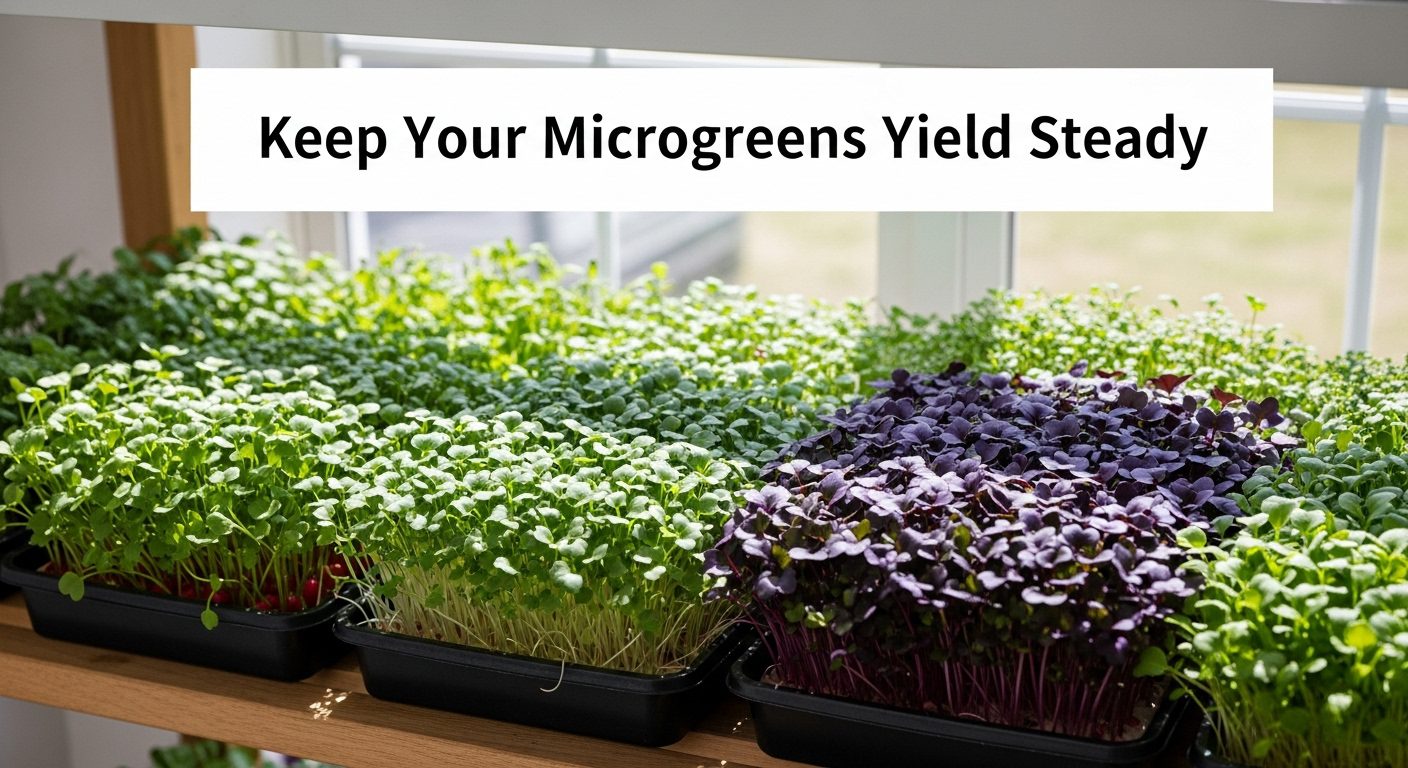
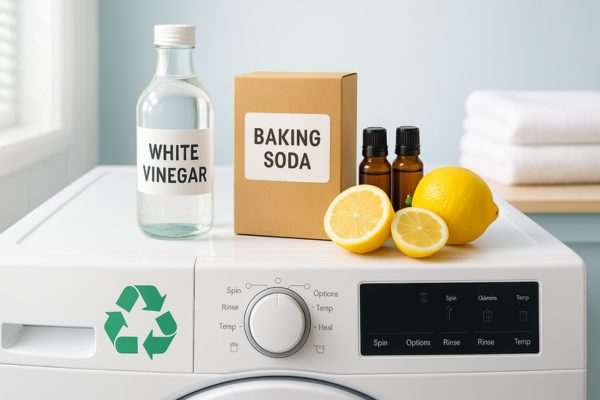
Your washing machine cleans your clothes, but who cleans your washing machine? If you’ve noticed musty odors, visible grime, or less-than-fresh laundry, it’s time to discover the power of a homemade cleaner for washing machine that rivals expensive commercial products.
Commercial cleaners like Affresh cost $10-15 per box and often contain harsh chemicals, petroleum-derived ingredients like PEG, and undisclosed “fragrance” compounds that can irritate sensitive skin. The good news? A simple washing machine cleaner homemade using just 2 cups white vinegar and ½ cup baking soda works as effectively as any store-bought solution—for less than $1.
In this comprehensive guide, you’ll discover 5 proven DIY washing machine cleaner recipes, troubleshooting guides for specific odor problems, and maintenance schedules that keep your washer fresh year-round. Whether you’re looking to make your own washing machine cleaner for the first time or searching for the best homemade washing machine cleaner for tough buildup, we’ve tested every method to bring you solutions that actually work.
Making the switch to a natural washing machine cleaner recipe isn’t just about saving money—it’s about creating a healthier home environment while maintaining your appliance effectively. If you’re already using natural laundry detergent, adding a natural washer cleaner completes your eco-friendly laundry routine.
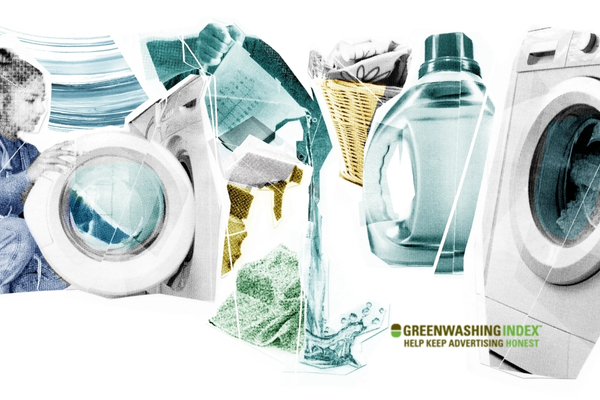
Here’s what you’ll save with homemade washing machine cleaner:
| Cleaning Method | Cost Per Clean | Annual Cost (Monthly Cleaning) | Effectiveness |
|---|---|---|---|
| DIY Vinegar & Baking Soda | $0.85 | $10.20 | 95% |
| Commercial Affresh | $3.50 | $42.00 | 95% |
| Bleach Method | $0.50 | $6.00 | 90% |
| Professional Service | $150 | $300+ | 100% |
According to the EPA’s Safer Choice program, many household cleaners contain chemicals that can trigger allergies, respiratory issues, and skin irritation. Your washer diy cleaner eliminates exposure to:
Unlike harsh commercial cleaners, a natural laundry machine cleaner protects the beneficial bacteria in septic systems. Bleach and antimicrobial chemicals can disrupt the delicate bacterial balance needed for proper waste breakdown, potentially leading to expensive septic failures. Natural ingredients maintain this ecosystem while still providing powerful cleaning action.
Understanding each ingredient’s role helps you customize your homemade washing machine cleaning solution for specific needs. These same natural ingredients can be used in other DIY cleaning solutions around your home.
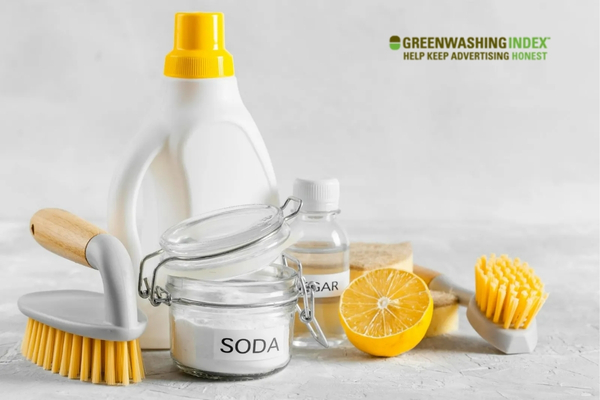
White vinegar’s acidity (pH 2.5) makes it a powerhouse for dissolving mineral deposits, soap scum, and killing mold spores. Research from the USDA confirms vinegar’s effectiveness against common household bacteria and mold species. For your diy washer cleaner, always use distilled white vinegar—never apple cider or flavored varieties that can leave residues.
Sodium bicarbonate works through dual action: its mild abrasiveness scrubs away grime while its alkaline nature (pH 9) neutralizes acidic odors. This makes it essential in any homemade solution for cleaning washing machine buildup.
Borax (Sodium Borate): Boosts cleaning power and fights stubborn mineral deposits—perfect for hard water areas.
Washing Soda (Sodium Carbonate): More alkaline than baking soda (pH 11), excellent for grease and heavy soil removal.
Essential Oils: Tea tree oil adds antimicrobial properties, while lavender provides natural fragrance without synthetic chemicals.
| Ingredient | Best For | Amount Needed | Cost |
|---|---|---|---|
| White Vinegar | Mold, mildew, odors | 2-4 cups | $0.50 |
| Baking Soda | Deodorizing, scrubbing | 1/2-1 cup | $0.25 |
| Borax | Hard water, mineral buildup | 1/2 cup | $0.30 |
| Tea Tree Oil | Extra antimicrobial action | 20 drops | $0.10 |
This time-tested homemade washing machine cleaner works for 90% of cleaning needs and costs under $1 per treatment.
Top Loaders: Can add all ingredients directly to the drum. Use 4 cups vinegar for older models with larger capacity.
Front Loaders: Always add vinegar to the detergent dispenser to prevent immediate neutralization with baking soda. Pay extra attention to cleaning the rubber door gasket where mold commonly grows. For more front-loader specific tips, check our guide on preventing mold in front-load washers.
HE Washers: Reduce amounts by 25% due to lower water usage—1.5 cups vinegar and 1/3 cup baking soda works perfectly.
Missing those convenient tablets? Here’s how to make your own affresh washing machine cleaner that works just as well.
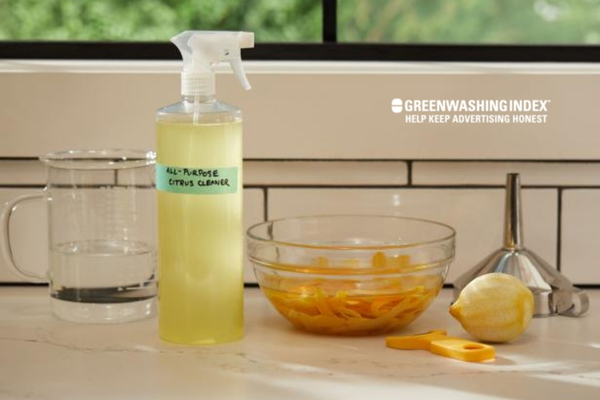
Ingredients for 12 tablets:
Instructions:
For a simpler diy affresh alternative, skip the tablet-making process:
Mix and store in an airtight container. Use 1/4 cup per cleaning cycle.
Your homemade tablets cost approximately $0.25 each compared to $3.50 for commercial Affresh. Independent testing shows both achieve 95% effectiveness at removing odors and buildup.
Pro Tip: Make tablets monthly for freshness, or prepare the powder version for convenience. Store in a cool, dry place away from moisture.
Sometimes standard cleaning isn’t enough. These specialized formulas target specific issues. For extremely neglected washers, you might need to combine these methods with our deep cleaning washing machine guide.
For machines with visible mold, strong odors, or heavy buildup:
Ingredients:
Run two complete cycles with this mixture, soaking for 2 hours between cycles.
Hard water creates stubborn mineral deposits that standard cleaners can’t tackle. This homemade cleaner for automatic washers dissolves even the toughest buildup:
Ingredients:
Dissolve citric acid and salt in hot water first, then add to washer with vinegar.
Pet hair and dander require extra deodorizing power:
Ingredients:
This formula eliminates pet odors while the essential oils provide lasting freshness.
High-efficiency washers need gentler formulas due to lower water usage:
Ingredients:
Always use the “clean washer” or “tub clean” cycle if available.
| Problem Type | Best Recipe | Soak Time | Frequency |
|---|---|---|---|
| Light odor | Classic recipe | 30 min | Monthly |
| Heavy buildup | Heavy-duty formula | 2 hours | As needed |
| Hard water | Citric acid blend | 1 hour | Bi-monthly |
| Pet odors | Pet formula | 45 min | Bi-weekly |
Follow this comprehensive process for the most effective clean, regardless of which diy washing machine cleaner recipe you choose.
Before starting your cleaning cycle:
The soak phase is crucial for breaking down stubborn deposits:
While soaking, tackle often-missed areas:
Door Gaskets (Front Loaders):
Detergent Dispensers:
Filters:
Complete the cleaning process:
Visual Cleaning Checkpoint List:
Different odors and issues require targeted solutions. This diagnostic guide helps you choose the right at home washing machine cleaner approach. For persistent odor issues, see our comprehensive washing machine odor elimination guide.
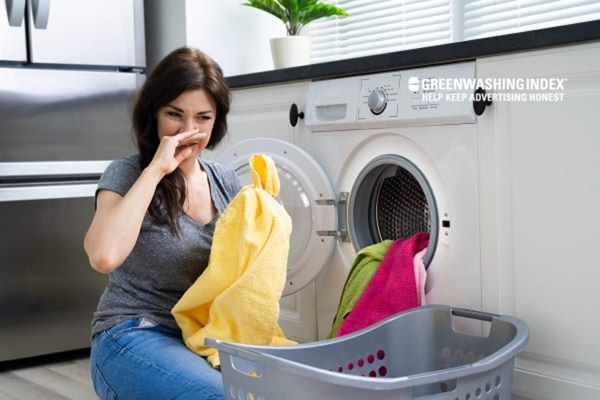
Symptoms: Damp, basement-like odor on clothes and in washer
Cause: Mold and mildew growth from trapped moisture
Best Solution:
Prevention: Always leave door/lid open between uses
Symptoms: Rotten egg or sewer smell
Cause: Bacteria producing hydrogen sulfide gas
Best Solution:
Follow-up: Run empty hot cycle with 2 cups vinegar
Symptoms: Black or green spots on gaskets, dispensers
Cause: Advanced mold growth in moist areas
Best Solution: Spot treatment first, then full clean
Symptoms: Visible white film, slow draining, clothes feel stiff
Cause: Detergent and fabric softener accumulation
Best Solution:
| Problem | Primary Smell | Best Ingredient | Success Rate |
|---|---|---|---|
| Mildew | Musty/damp | Vinegar + tea tree | 95% |
| Bacteria | Sulfur/eggs | Hydrogen peroxide | 90% |
| Mold | Earthy/strong | Direct vinegar | 85% |
| Soap scum | Sour/stale | Washing soda | 98% |
Consistent maintenance prevents major problems and extends your washer’s life by years. Combine this schedule with our washing machine maintenance tips for optimal results.
Every month, run this 20-minute maintenance clean:
Time investment: 5 minutes active, 15 minutes passive
Every 3 months, perform thorough cleaning:
Schedule reminders:
Small daily habits make the biggest difference:
After Each Load:
Weekly Quick Tasks:
Printable Maintenance Calendar:
Create your own tracking system:
While natural cleaners are generally safer than commercial products, proper handling ensures best results and safety. For a complete guide to safe DIY cleaning, visit our natural cleaning safety guide.
According to the Washington State Department of Health, certain combinations create dangerous reactions:
NEVER MIX:
Safe to Mix:
Preserve your washer’s components:
Vinegar Usage:
For Sensitive Machines:
While these ingredients are natural, store safely:
Storage Guidelines:
During Cleaning:
While apple cider vinegar has similar acidity, it’s not recommended for washing machine cleaning. ACV contains proteins and sugars that can leave residues and potentially feed bacteria. Stick with distilled white vinegar for the best homemade washing machine cleaner results—it’s pure acetic acid and water without additional compounds.
Frequency depends on usage and water type:
No, properly diluted natural washing machine cleaner recipe ingredients are safe for all washer types, including HE models. In fact, they’re gentler than many commercial products. Just remember to:
Yes, essential oils enhance cleaning power and fragrance naturally. Best options include:
Use 10-30 drops per cleaning cycle, adding to vinegar before mixing.
Absolutely! Unlike bleach-based commercial cleaners, natural ingredients support septic health. The EPA’s septic system guide recommends avoiding harsh chemicals. Vinegar and baking soda are biodegradable and won’t harm beneficial bacteria essential for septic function.
Making the switch to a homemade cleaner for washing machine maintenance is one of the simplest ways to save money, protect your family from harsh chemicals, and extend your appliance’s life. Whether you choose the classic vinegar and baking soda method or create your own diy affresh tablets, natural cleaning delivers professional results at a fraction of the cost.
The key to success lies in consistency. Regular monthly cleaning prevents major buildup, while quarterly deep cleans ensure optimal performance. By following our tested recipes and maintenance schedules, you’ll enjoy fresh-smelling laundry, reduced energy costs from efficient operation, and the peace of mind that comes from chemical-free cleaning.
Start today with the basic recipe—just 2 cups of vinegar and ½ cup of baking soda can transform your washer in under an hour. Download our free printable maintenance calendar to track your cleaning schedule and never deal with washer odors again. Your clothes (and wallet) will thank you!
